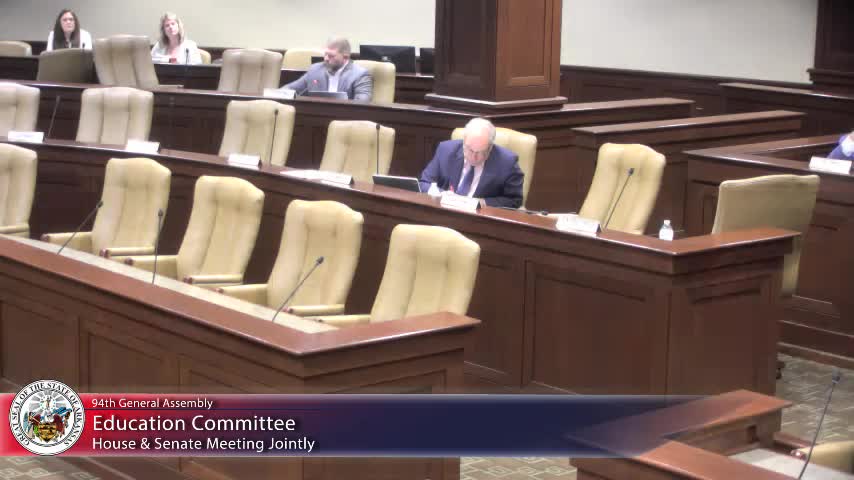Tennessee redesigns K-12 funding formula to enhance student support and accountability
October 02, 2023 | EDUCATION COMMITTEE - SENATE, Senate, Committees, Legislative, Arkansas
This article was created by AI summarizing key points discussed. AI makes mistakes, so for full details and context, please refer to the video of the full meeting. Please report any errors so we can fix them. Report an error »

During a recent meeting of the Arkansas Senate Education Committee, discussions centered on the effectiveness of performance-based funding models in education, particularly referencing Arizona and Ohio. Concerns were raised about these states' previous incentive-based formulas, which were repealed due to the allocation of additional aid primarily benefiting wealthier communities that did not require extra funding. This raised questions about the overall success and fairness of such funding strategies.
The committee explored how different states approach funding for education, particularly in rural districts that often struggle with economies of scale. It was noted that many states utilize weighted funding formulas to address these disparities, adjusting financial support based on factors like student density and specific needs.
A significant trend highlighted was the shift from census-based funding for special education to a more student-based approach, where funds are allocated based on the number of students with Individualized Education Programs (IEPs). This change aims to provide a more equitable distribution of resources, although some states impose caps to manage costs.
The meeting also touched on broader trends in K-12 funding legislation across the country, with states increasingly adjusting their funding formulas to account for inflation and specific student populations, such as those from low-income backgrounds or English learners. For instance, Nebraska recently increased its special education reimbursement rate significantly, while Utah is exploring innovative solutions to support districts facing declining enrollment.
In a notable case, Tennessee is overhauling its funding formula after 30 years, driven by a need for a simpler and more effective system. The new model emphasizes student needs and includes extensive public engagement to ensure stakeholder input.
As Arkansas considers its own funding strategies, the committee emphasized the importance of transparency and public input in shaping policies that will impact school districts statewide. The discussions underscored the need for careful planning to avoid potential fiscal challenges in the future, particularly as federal aid expires and enrollment fluctuates.
The committee explored how different states approach funding for education, particularly in rural districts that often struggle with economies of scale. It was noted that many states utilize weighted funding formulas to address these disparities, adjusting financial support based on factors like student density and specific needs.
A significant trend highlighted was the shift from census-based funding for special education to a more student-based approach, where funds are allocated based on the number of students with Individualized Education Programs (IEPs). This change aims to provide a more equitable distribution of resources, although some states impose caps to manage costs.
The meeting also touched on broader trends in K-12 funding legislation across the country, with states increasingly adjusting their funding formulas to account for inflation and specific student populations, such as those from low-income backgrounds or English learners. For instance, Nebraska recently increased its special education reimbursement rate significantly, while Utah is exploring innovative solutions to support districts facing declining enrollment.
In a notable case, Tennessee is overhauling its funding formula after 30 years, driven by a need for a simpler and more effective system. The new model emphasizes student needs and includes extensive public engagement to ensure stakeholder input.
As Arkansas considers its own funding strategies, the committee emphasized the importance of transparency and public input in shaping policies that will impact school districts statewide. The discussions underscored the need for careful planning to avoid potential fiscal challenges in the future, particularly as federal aid expires and enrollment fluctuates.
View the Full Meeting & All Its Details
This article offers just a summary. Unlock complete video, transcripts, and insights as a Founder Member.
✓
Watch full, unedited meeting videos
✓
Search every word spoken in unlimited transcripts
✓
AI summaries & real-time alerts (all government levels)
✓
Permanent access to expanding government content
30-day money-back guarantee

